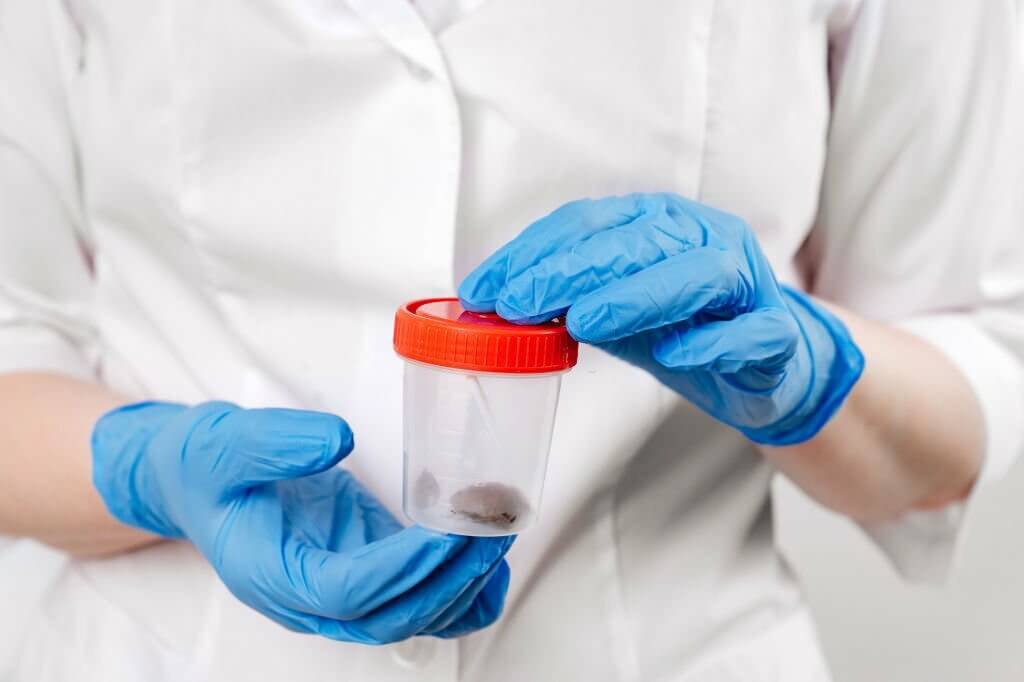How to Use a Stool Collection Kit to Collect and Store Fecal Samples

Fecal samples are often requested by healthcare providers to screen for pathogenic organisms, analyze gut microbiota composition, or test for biomarkers indicative of gastrointestinal conditions. Proper collection and handling of specimens is imperative for obtaining accurate test results. This article provides an overview of fecal sampling procedures and storage recommendations, with a focus on testing for colorectal cancer.
Instructions for Patient Self-Collection
Patients are typically provided a stool collection kit comprising a screw-top plastic container, wooden spatula, patient labels, and biohazard bag. Thorough hand hygiene using soap and warm water before and after collection is imperative. To collect the specimen, patients should:
-
1. Place a collection device such as a disposable basin or plastic wrap over the toilet bowl to catch the stool.
-
2. Deposit the stool sample directly into the device. Take care to avoid urinary contamination.
-
3. Use the provided spatula to transfer approximately 1-2 teaspoons of stool from areas with blood or mucus into the collection container.
-
4. Secure the screw-top lid tightly and affix a patient label to the outside of the container.
-
5. Discard remaining sample into the toilet and any collection accessories into a biohazard bin.
-
6. Place the labeled collection container into the biohazard bag and store refrigerated.
Specimens should be delivered to the laboratory within 24 hours of collection. If prompt delivery is impossible, storage at 2-8°C for up to 72 hours is recommended. Freezing or adding preservatives can damage cellular material and distort test findings.
Clinical Utility of Fecal Testing
Fecal tests allow noninvasive screening for an array of gastrointestinal conditions. Cultures can identify Salmonella, Shigella, Campylobacter, and other bacterial pathogens causing acute gastroenteritis. Microscopic examination can detect intestinal parasites. Enzyme immunoassays identify antigens specific to rotavirus, adenovirus, norovirus, and astrovirus.
For colorectal cancer screening, fecal immunochemical tests (FIT) are recommended for detecting occult blood indicative of neoplastic lesions. More advanced techniques like fecal DNA testing can identify specific molecular biomarkers and gene mutations associated with colorectal cancer. These noninvasive tests have demonstrated utility for screening average-risk adults over 50 years old.
Collecting Quality Specimens for Colorectal Cancer Testing
Obtaining quality fecal specimens is crucial for accurate colorectal cancer screening. Suboptimal collection technique is a major reason for false negative results. Patients should adhere to the following guidelines:
-
✅Refrain from specimen collection during or after events causing irritation like digital rectal exams, prostate biopsies, or menstruation which can cause benign bleeding.
-
✅Cease NSAIDs, aspirin, anticoagulants, vitamin C or other supplements that could influence test results.
-
✅Avoid cross-contamination of urine or water which dilutes blood concentration.
-
✅Collect only from areas of the stool which appear bloody, mucousy or discolored.
-
✅Transfer specimen directly to the collection vial without contact with water or toilet surfaces.
-
✅Fill vial to the indicated volume (typically 5-10mL). Insufficient quantity leads to false negatives.
-
✅Screw cap on tightly to avoid leaking which could invalidate the sample.
-
✅Label container clearly and complete requisition form accurately.
-
✅Deliver sample to laboratory as soon as possible, ideally within 6-24 hours. Hemoglobin degrades over time, compromising test sensitivity.
Patients should follow kit instructions closely and contact their healthcare provider with any questions. Proper technique and fresh samples are imperative for accurate fecal occult blood testing.
Innovations in Fecal Sampling Devices
Traditional fecal collection relies on spoons or swabs, which are technique-dependent and risk specimen inadequacy or contamination. Innovations in sampling devices aim to simplify collection and standardize high-quality specimens.
Flocked swabs with detachable tips are a promising innovation. Nylon fiber tips provide abundant absorbent surface area to collect specimen material. Slender, flexible handles allow patients to comfortably obtain samples from rectal mucosa. Once collected, the tip detaches and is deposited directly into the transport vial. This eliminates manual transfer steps that can lead to loss or contamination of material.
An example is the Mantacc 93050W Flocked Fecal Sampling Kit which provides all components for simple, hygienic, standardized collections including the detachable-tip swab, leakproof transport tube, and biohazard waste bag. Kits also integrate sample labels and requisition forms to streamline the testing process. This kit shows promise for improving specimen quality and test sensitivity.
Fecal testing provides a powerful noninvasive tool for screening gastrointestinal conditions like colorectal cancer. However, traditional collection methods have limitations. Innovations like the detachable-tip flocked rectal swab aim to simplify and standardize specimen collection, transport, and processing. Further research on performance characteristics of fecal sampling devices will help optimize sensitive, accurate testing. Patient education on proper technique remains a priority for clinical implementation.









